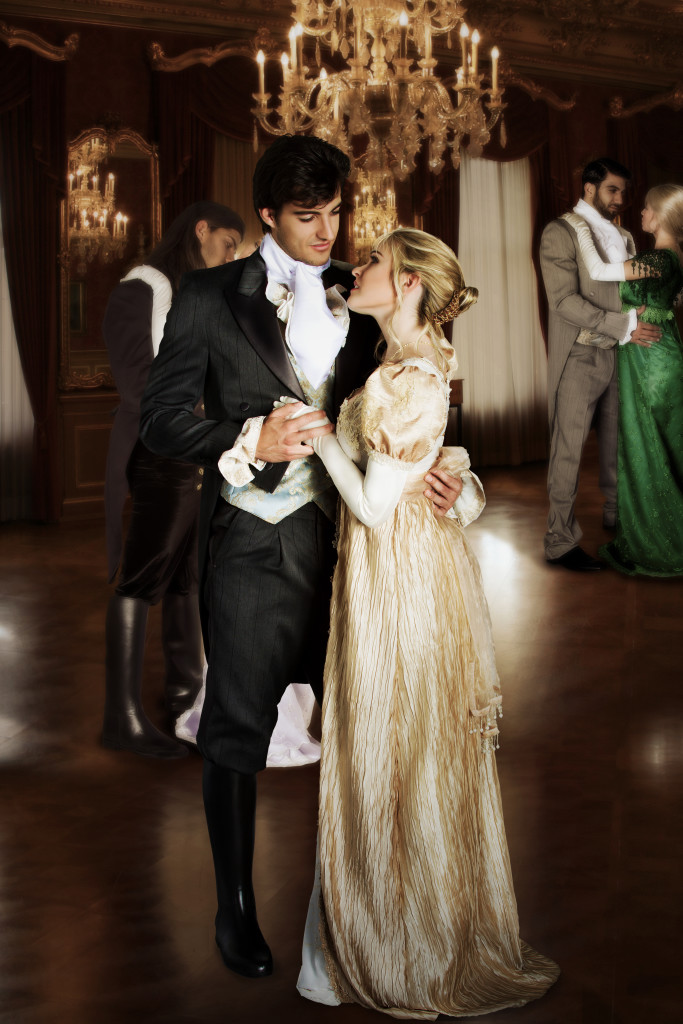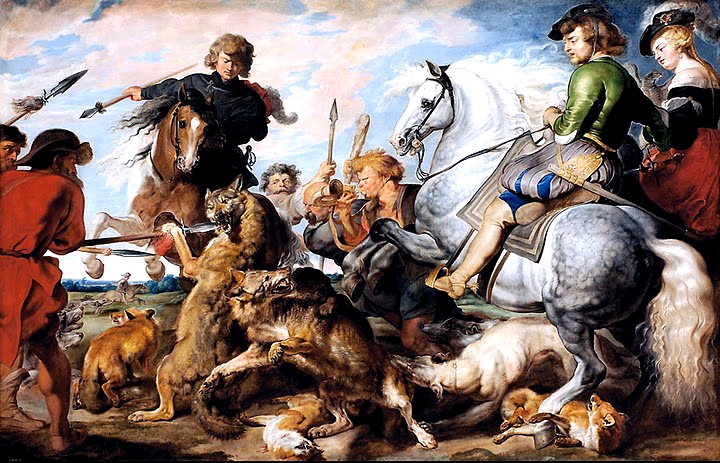From the Archives: Regency House Parties
 A time-honored English tradition, dating back hundreds of years, is the House Party. In England, house parties served multiple purposes: the gathering of friends; an informal setting in which to discuss politics and possibly sway a member of Parliament; showing off one’s wealth to friends or anyone else the host is trying to impress; and it also could provide a last-ditch effort to help a young lady secure a marriage proposal if her Season had failed to produce such a coveted event—a hostess could easily bring the hopeful young lady in contact with the gentleman of choice and provide a variety of activities to show her best side.
A time-honored English tradition, dating back hundreds of years, is the House Party. In England, house parties served multiple purposes: the gathering of friends; an informal setting in which to discuss politics and possibly sway a member of Parliament; showing off one’s wealth to friends or anyone else the host is trying to impress; and it also could provide a last-ditch effort to help a young lady secure a marriage proposal if her Season had failed to produce such a coveted event—a hostess could easily bring the hopeful young lady in contact with the gentleman of choice and provide a variety of activities to show her best side.
House parties most often occurred during or toward the end of the Season, while Parliament was in recess, and were especially popular the autumn months of August and September because they coincided with hunting and shooting season. House parties usually lasted three to four days, from Thursday or Friday until Monday, including what is now known as the weekend. Part of the reason for the long stay lay in the difficulty of travel over dangerous and poorly-maintained roads.

Country estates were the perfect way to highlight the host’s wealth. Often a long and meandering driveway took guests through beautifully landscaped acres of land to the main house. There, an impressing outer stairway led to an imposing great hall. Everyone in attendance viewed art, furniture and other luxuries, such as carriages, a stable full of impressive horses, and lawn tennis courts. A house party cost a great deal of money due in part to the lavish meals provided to guests. Hosts served expensive imported alcohol and lavish dessert, and the best glasses, china, and silver were used, or purchased, for such an event. Hosts often outfitted their servants with new, expensive livery and sometimes hired additional servants to accommodate the strain of so many guests. Female guests usually brought their ladies’ maids, and some gentlemen brought their valets. If so, these servants had to be fed and given accommodations. If not, the host and hostesses’ house maids and footmen filled these roles. Families often ate and lived very modestly for months after a house party to make up for the cost. Others simply incurred enormous debt they had no hope of paying.
Guests during the Regency enjoyed a simple buffet breakfast whenever they arrived in the dining room which included eggs, fruits, toast, ham, pastries and jam. They drank tea, coffee, chocolate (which was hot and bitter like coffee). Men might also drink beer or cherry brandy. Some hostess served luncheon but this was a new tradition during the Regency. Some old-fashioned folk held to breakfast, dinner and supper. Luncheons could be informal meals in the dining room or picnics al Fresca, or they could be as formal as dinner. Afternoon tea always appeared, of course, and dinner was always formal, requiring a change into formal wear. Of course, for the ladies, every activity or meal seemed to have its own dress code and often a change of hairstyle as well.

Activities at a house party during the day usually involved the men hunting or shooting (depending on the season), the fox hunt, and billiards. Alas, the ladies usually got stuck inside much of the day visiting, writing letters, and other tame activities. Sometimes, they went outside for walks or carriage rides, or they watched the men plays sports.
Appropriate games for ladies out of doors included croquet, lawn tennis, archery, shuttlecock, and lawn bowling or lawn bowls. Indoor games that involved both sexes included word games, charades, musicales, dances, and card games. Baccarat gained popularity because the Prince of Wales loved this card game–probably because it was technically illegal. “Prinny” reportedly provided his own set of counters so he’d be prepared for an on-the-spot game. Eventually bridge took Baccarat’s place in popularity.
After dinner, the ladies left the men and retired to the drawing room, leaving the gentleman to drink port, smoke cheroots, and discuss manly topics such as horses and politics. Later, the gentlemen joined the ladies for cards or music or dancing or games. 
The house party, like most events, evolved over time. However, its purpose and popularity lasted for generations.
Sources:
Years of researching Regency customs inspired the bulk of this post, however, I also drew from:
Evangeline Holland / Posted in Season, Society
Further Reading:
The Country House Party by Phyllida Barstow
The Marlborough House Set by Anita Leslie
Society in the Country House by Thomas Hay Sweet Escott
Manners and Rules of Good Society by A Member of the Aristocracy
Etiquette of Good Society by Lady Colin Campbell
“A Country House Party” by Lord Byron in A Satire Anthology by Carolyn Wells

Loved reading this. I could so picture it all. Too, probably for many of us historical romance readers, its a favorite part in reading these scenes! I learned so much more here. Fab post. Have a great weekend.
Cathie, a reader 🙂
This was beautifully written and well presented. It had a clear wiring and was not clogged as other blogs could be. I loved every moment!
Thank you, Geraldine! Glad you enjoyed it!